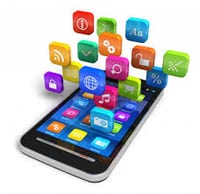By Uzair Dada
The era of “mobile” being a nice to have at events is over. Mobile has emerged as a fundamental and increasingly critical component of the overall event experience for marketers wanting to maintain a competitive edge.
 The average attendee at a tradeshow or event owns more than three mobile devices, and 80% of their mobile time is spent using apps. The majority of attendees indicate that an enjoyable and informative mobile experience is the main factor in their decision to purchase or inquire about a product at an event.
The average attendee at a tradeshow or event owns more than three mobile devices, and 80% of their mobile time is spent using apps. The majority of attendees indicate that an enjoyable and informative mobile experience is the main factor in their decision to purchase or inquire about a product at an event.
By the end of 2014 mobile penetration rate will reach 90% and mobile phones will overtake PCs as the most common Web access device worldwide, according to a Gartner study.
Mobile is both helping brands take their events to another level, and also helping them run their businesses more efficiently and with a greater impact on the bottom line. Look no further than a recent study conducted by the Small Business and Entrepreneurship Council for proof of this. Businesses save up to 291 hours every year using mobile technology, which means that, on average, an extra 5.6 hours per week can be allocated toward generating business opportunities and other revenue-driving areas.
Get Ready to Go Mobile
Mobile apps at events have proven themselves critical in building relationships, generating leads, and most importantly, acquiring new customers. Whether these apps are used to help attendees access speaker profiles, share content, learn about products, or simply to network and make the right connections in an interactive setting, mobile event apps enable brands to provide their prospects with an endless stream of content and information at their fingertips, pre-event, at event, and post-event.
How can brand marketers stay ahead of the curve when it comes to the mobile event craze? Here are five helpful tips to consider:
1. Think of mobile as part of an integrated marketing strategy. Brand marketers should think of events as part of an overall marketing strategy that begins well before the day of the event. Mobile should be the pivot point that drives marketing strategy leading up to the event across all other channels. Whether it’s via a smartphone, tablet, notebook or any combination of these devices, today’s event attendee is mobile in every sense, and demands that companies they are interacting with at an event already know them by the time they show up at their booth.
2. Capture new prospects. The main purpose of exhibiting at events, small or large, is to generate sales leads and build awareness. However, the majority of companies are still dependent on old-fashioned practices such as business card collection and paper-based forms when it comes to capturing critical prospect lead information. Companies need to leverage mobile technologies and automated tools such as badge card scanners and check-in apps that capture prospect data more accurately, and are automatically transferred to their Marketing Automation and CRM systems in real-time while the interaction is still top of mind.



